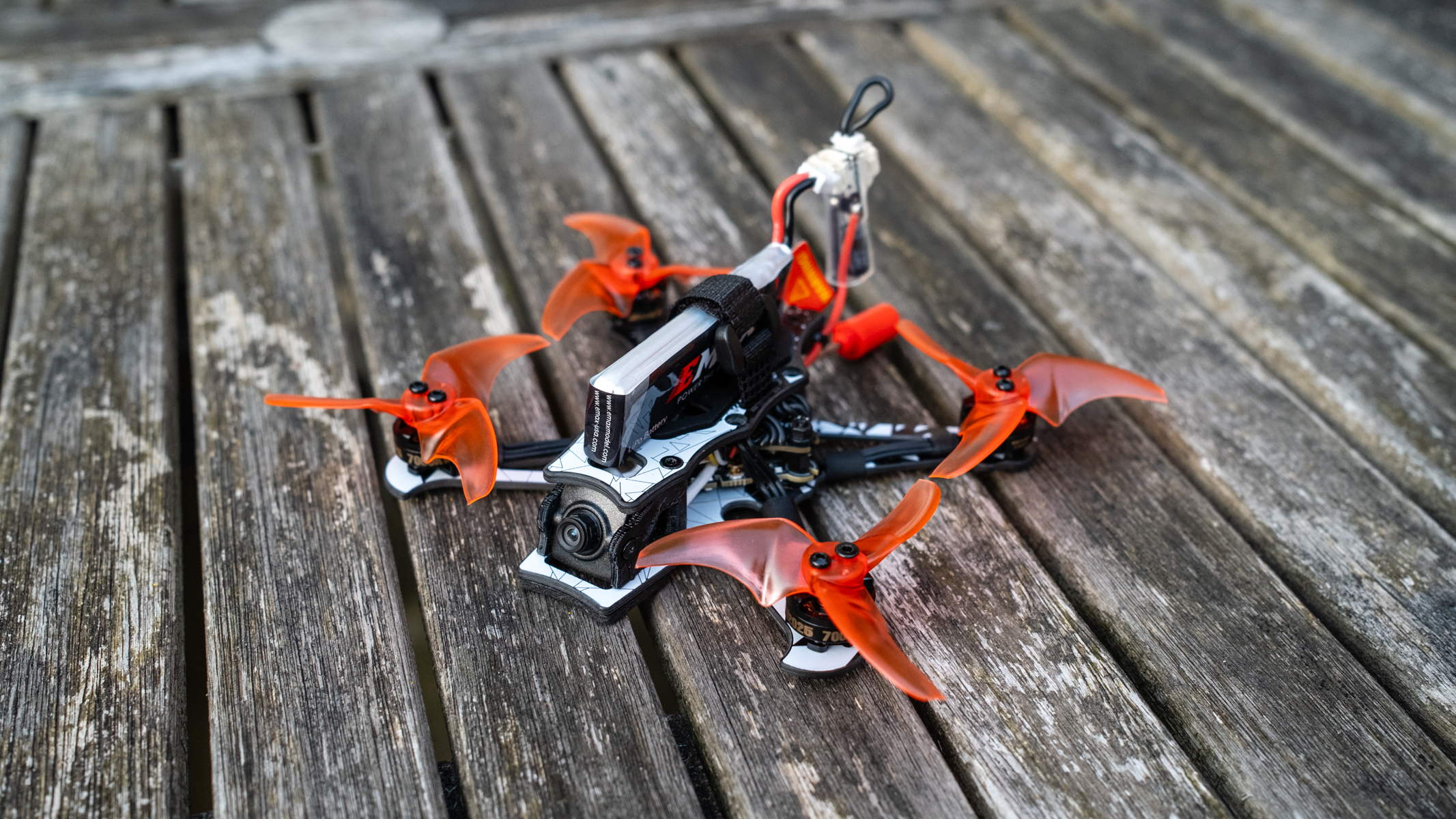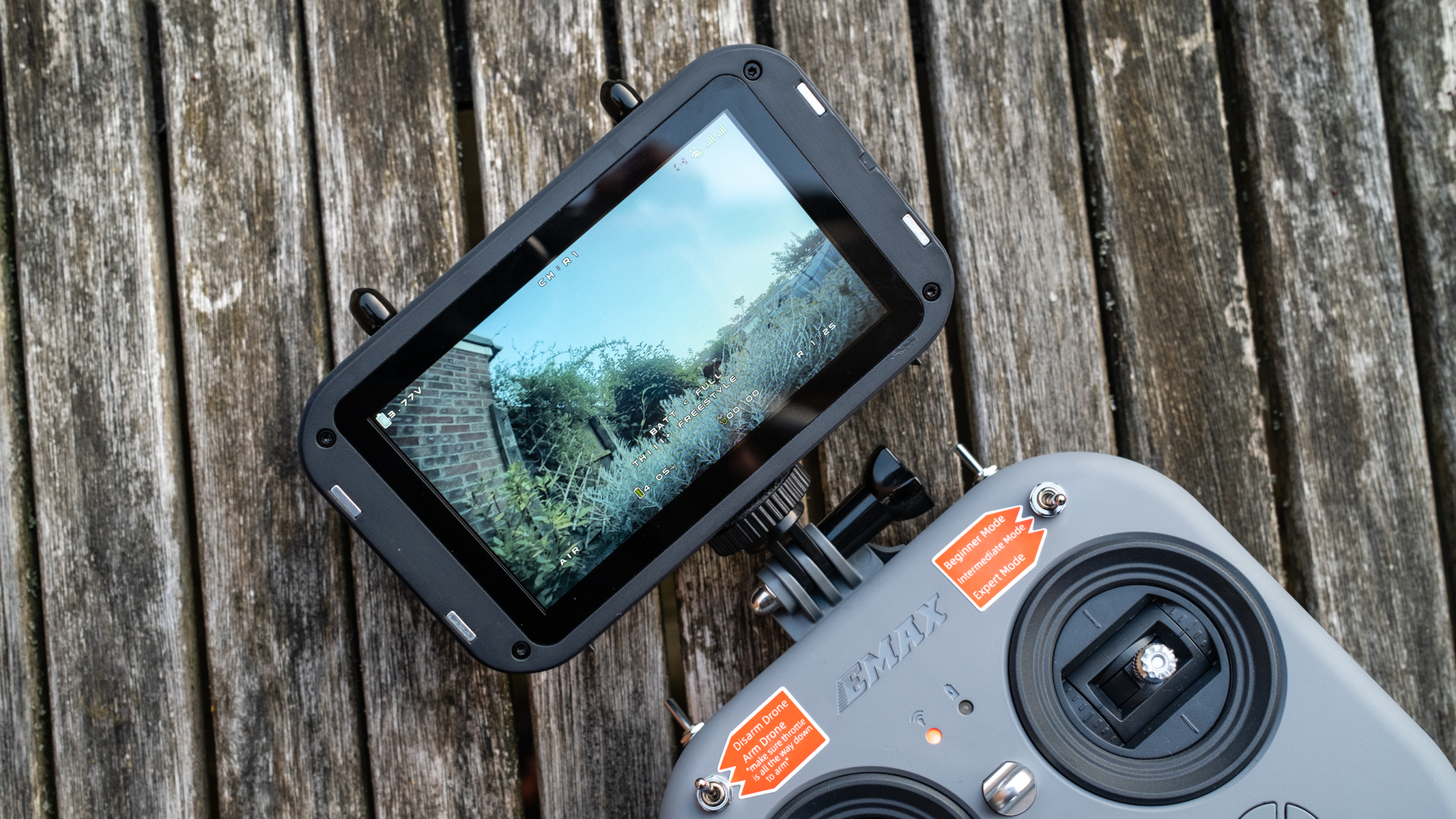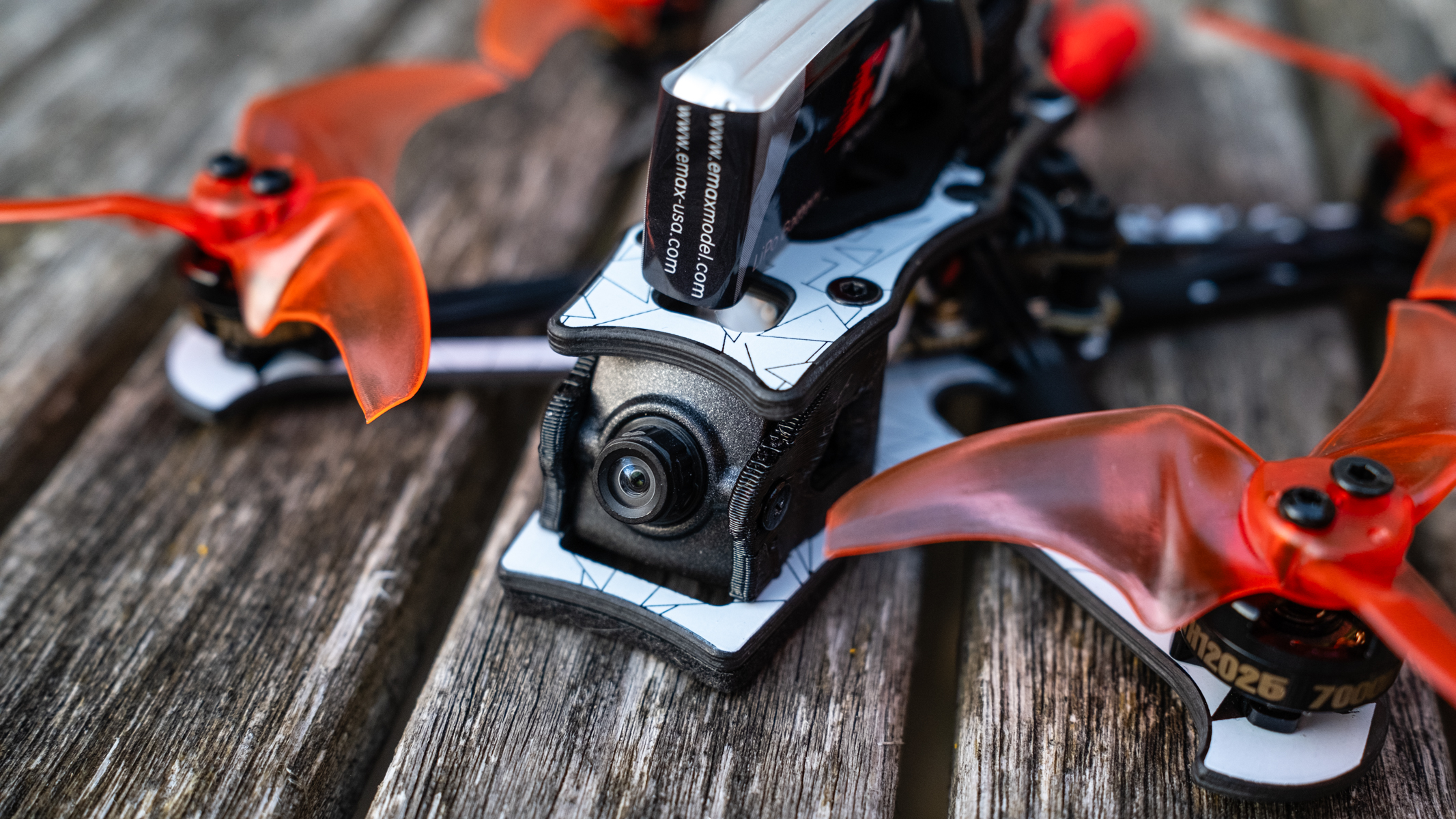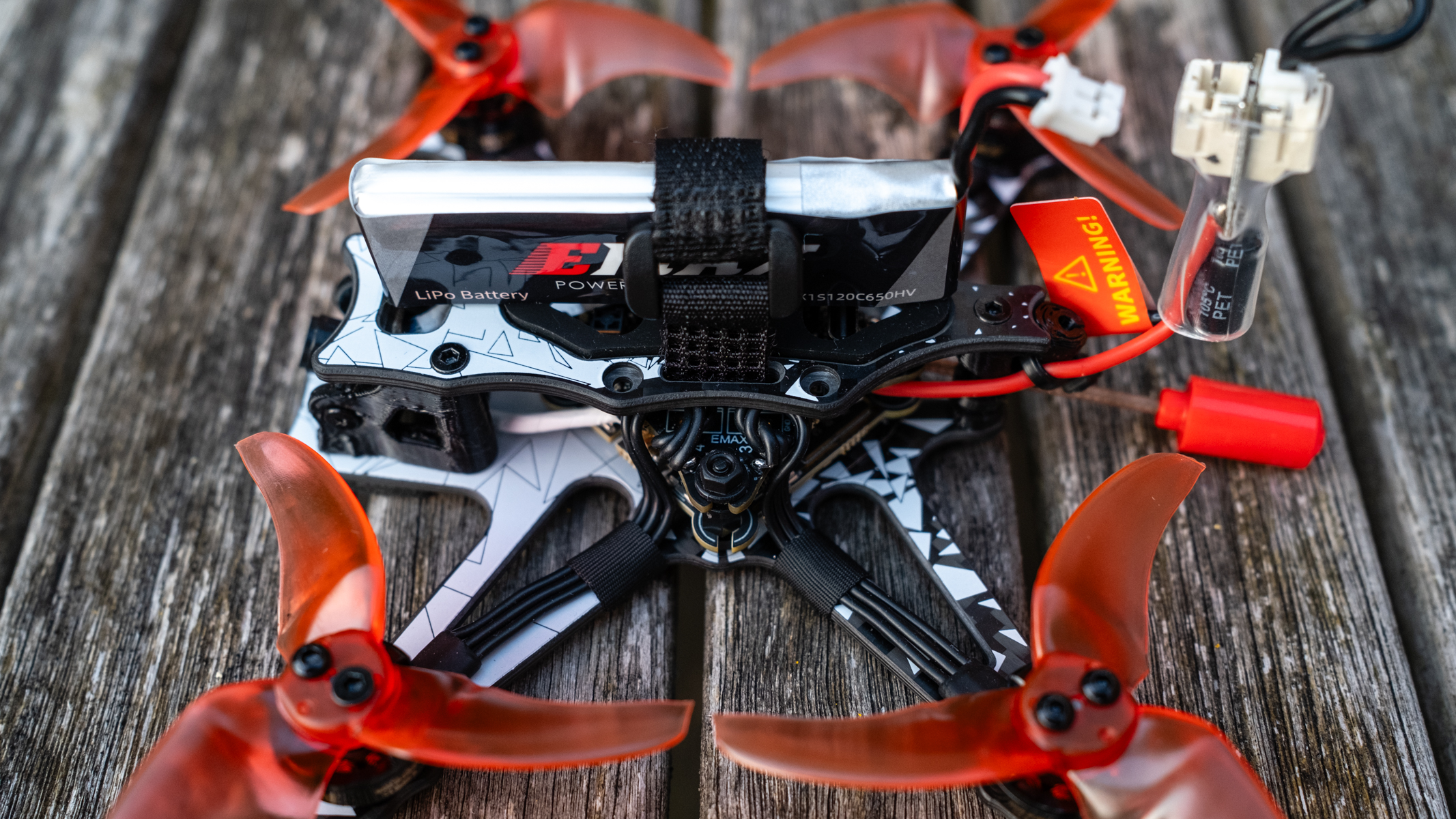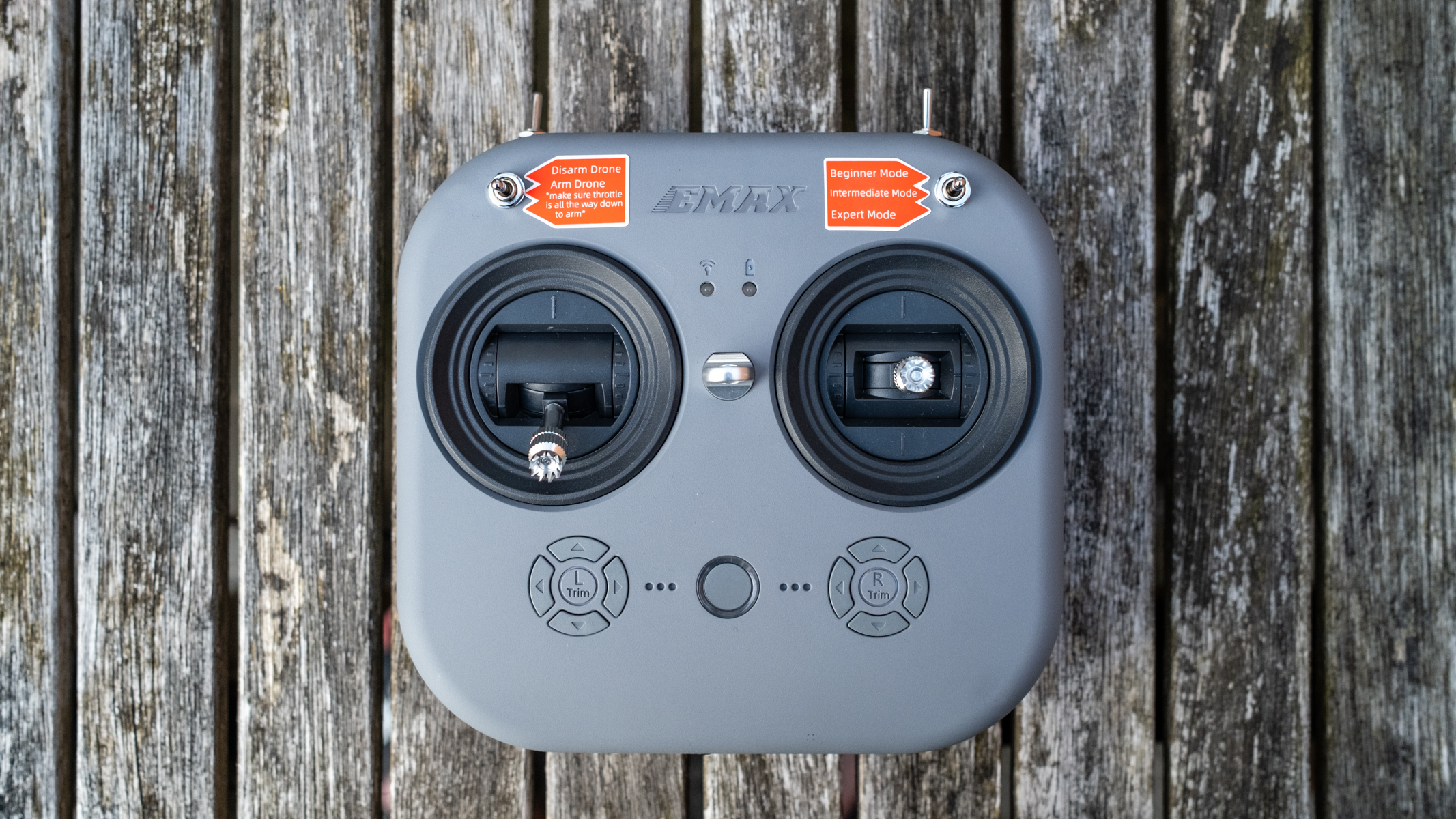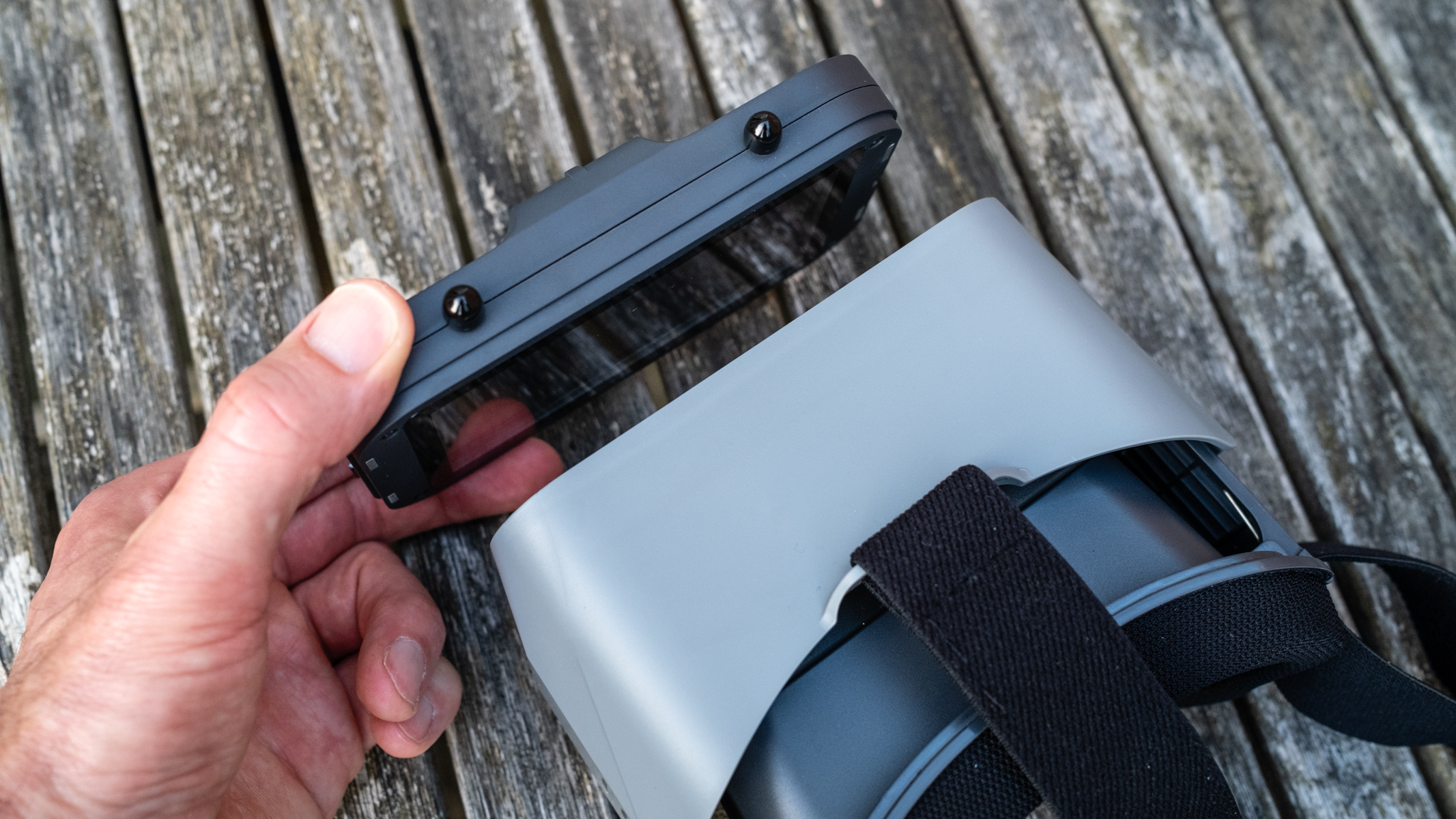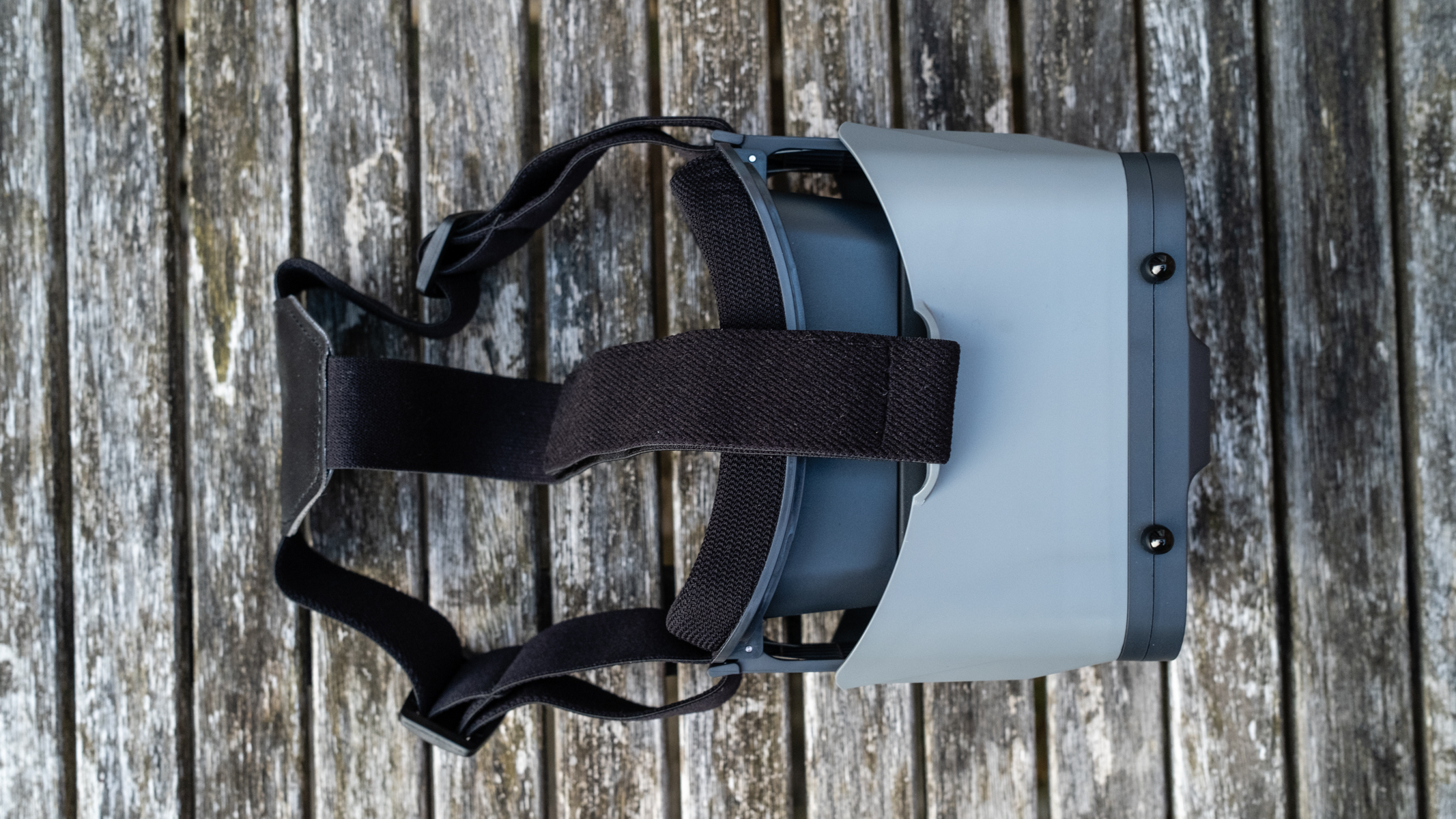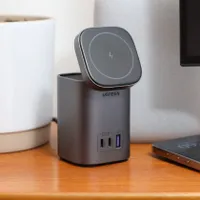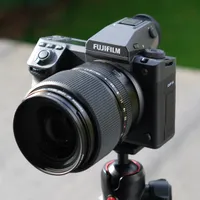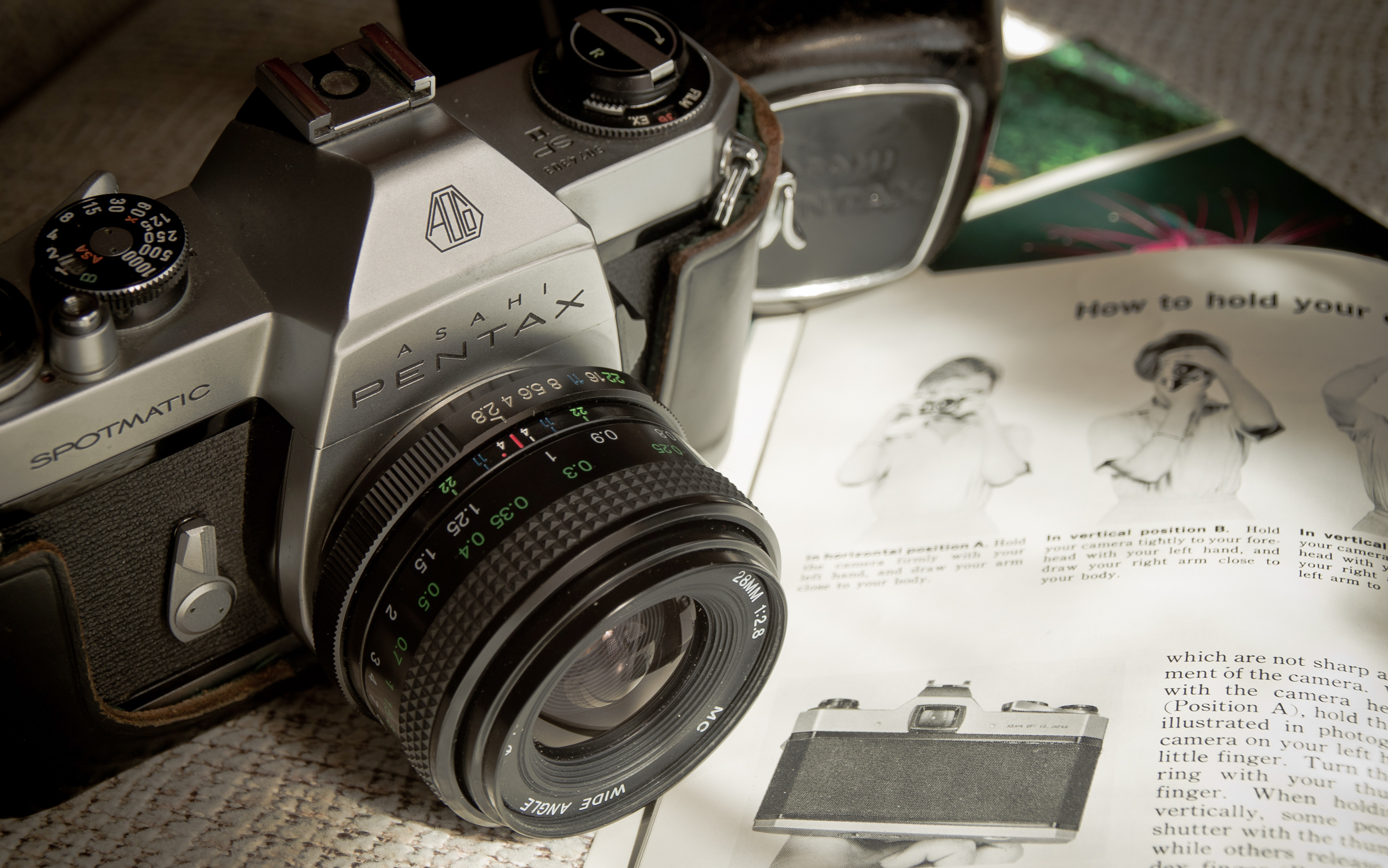Digital Camera World Verdict
The Emax Tinyhawk III Plus Freestyle RTF is arguably the most capable beginner FPV drone available, with great tuning for beginners and everything you need in the kit. However, a few extra batteries would be useful to increase flight times. Moreover, the VTX/FPV feed and goggles are HDZero, offering a much clearer goggle feed than analog and you can fly in 1S or 2S battery configurations.
Pros
- +
HD goggles/screen
- +
1S and 2S battery configurations
- +
Well-tuned controls
Cons
- -
No propeller guards
- -
Goggles aren’t compatible with glasses
- -
No hover feature for beginners
Why you can trust Digital Camera World
I stumbled into FPV drones through my job as a reviewer, and I'm glad that I did because they're a huge amount of fun. And after flying many RTF (ready to fly) kits, including the DJI Avata 2 and its predecessors, I can confidently say that the Emax Tinyhawk III Plus Freestyle RTF Kit is one of my favourites to date.
This is a more traditional FPV kit aimed at beginners, so there are few bells and whistles available. The most convenient feature is the beeper for finding the drone after crashes, but this is pretty basic and requires you to be within a couple of metres to hear. It's still extremely useful though.
Flight modes are also pretty standard with Level, which auto levels the drone's pitch and roll while you regulate the throttle, Angle where the pitch and roll of the drone are locked at an angle, and Air (acro) where you have to control and correct all movement of the drone. The main difference with the latter is that you can roll, flip and dive the drone.
This all takes a while for everyone to get used to, but these flight modes allow you to progress to acro, which is the most exhilarating yet difficult mode to fly in. The Emax Tinyhawk III Plus Freestyle RTF Kit is arguably the best of its type available, but don’t just take my word for it here, read on to find out why…
Emax Tinyhawk III: Specifications
| Wheelbase | 110mm |
| FC | STM32F411 (100MHz) |
| Motors | 12025-7000KV |
| Props | AVAN Rush 2.5inch propellers |
| Camera | HDZero Nano Lite Camera |
| Camera Adjustable Angle | Adjustable but angles not specified |
| Receiver Protocol | ELRS 2.4G (Betaflight) |
| VTX | Up to 200mW transmission |
| Transmitter | Emax E8 Transmitter |
| Goggles | Emax Transporter II HD |
| Battery | x1 or x2 Emax 1S HV 650mAh |
| Flight time | Up to 4 minutes |
| Weight | 65.5g / 2.31oz (without batteries) |
Emax Tinyhawk III: Price
The Emax Tinyhawk III Plus Ready to Fly Kit is the third version of this popular drone series, but this time delivering a digital HDZero VTX for a clearer and higher resolution image in the goggles. This isn’t common at this end of the FPV drone market, so it's fairly unique at the time of writing.
The kit comes with everything you need to get started including the drone, Emax Transporter 2 HD FPV Goggles, Emax E8 Transmitter, Two 650mAh 1S batteries, two sets of propellers, a basic six-port USB 1S battery charger, and other accessories. More batteries are essential, so make sure you buy at least 4-6 extras.
This all costs $691 / £496, which is expensive for a beginner model and puts the price well above much of the competition. But with fantastic flight performance, build quality and the digital VTX, it's very much a case of you get what you pay for. The kit can be purchased from the main Emax website, the Emax USA website, Amazon, and many independent FPV retailers.
The best camera deals, reviews, product advice, and unmissable photography news, direct to your inbox!
Emax Tinyhawk III: Design & Handling
Being a freestyle FPV drone, albeit a palm-sized model, the Tinyhawk III Plus sports the typical X-shaped airframe with an exposed flight controller and other electronics at the sides, sandwiched between two levels. The FPV camera with an adjustable angle sits slightly recessed at the front, while the batteries sit on top and are held in place with a Velcro strap with an HV 1S battery connector lead at the rear.
The propellers are also exposed rather than having propeller guards like micro whoops, so it's not suitable for indoor flights, but having exposed propellers is an advantage for freestyle. Plus, the AVAN Rush 2.5-inch propellers are incredibly robust and it takes a lot to break or damage them. There are two sets in the kit and they're easy to buy if you need more, but you do have to attach them correctly yourself when you receive the kit.
I appreciate that this description makes it sound like the Tinyhawk III Plus is vulnerable to damage, but this couldn’t be further from the truth. This is a tried and tested design for freestyle FPV drones, and although no FPV drone is invincible, it takes a fast crash into a hard surface to cause damage. Part of the durability will naturally be the small size and light weight of the drone combined with the robust build quality.
The Emax E8 Transmitter that comes with the kit is unsurprisingly much larger than the drone with an almost square shape to it. It's comfortable to hold thanks to the low-profile grips on the back – no need for a neck strap – and the gimbals are responsive despite the low cost of the transmitter when purchased separately. One useful feature is that all of the main flight switches come labeled with easy-peel stickers, so you can see what everything does at a glance or remove them if you wish.
The transmitter offers eight channels, which is useful when flying with other pilots, and the power output can be set between 10 and 100mW. The battery is a replaceable 18650, that's charged within the controller via USB-C. Plus, you can also use it to control FPV simulators on a computer when connected via USB-C, which is a great way to hone your skills before heading out with the Tinyhawk III Plus itself.
Emax Tinyhawk III: Drone Performance
When you see the word 'beginner' you naturally think that the product in question will be lacking in some way in the performance department. To be fair, this is often the case, but with the Tinyhawk III not only do you get a drone that's a great starting point for beginners, but also one that's well-suited to intermediate and more advanced pilots.
This is achieved because the Tinyhawk III Plus can be flown in both 1S and 2S battery configurations; with 1S you have to use the included HV loop cable to complete the circuit, while with 2S you simply install two 1S batteries and plug them into the drone. The former provides a much more sedate flying experience, which is perfect for beginners learning to fly.
With the 2S configuration, you get much more power, which means you can fly freestyle; flipping, rolling, and driving the drone with ease. Flights typically last 3-4 minutes, but the aggressiveness of flight can and will reduce this, as will the wind because higher winds mean that the motors have to be pushed harder.
The tuning of the drone is spot on for beginners and intermediate pilots. More advanced pilots can attach the Tinyhawk III Plus to the free Betaflight software and input their own rates for a more vigorous customized flying experience. But whichever way you go here, the drone is a huge amount of fun to fly and although I'm only an intermediate FPV pilot at best, the Tinyhawk III Plus was able to handle everything I threw at it with ease.
Emax Tinyhawk III: VTX performance
The Tinyhawk III Plus uses an HDZero Nano Lite Camera that sends a clear and sharp digital FPV video feed to the Emax Transporter II HD goggles. This produces a 720p 60 FPS (1280x720px) image, that can also be recorded by the goggle's built-in DVR when a microSD card up to 64GB is inserted. So, although you don’t get crystal clear and stabilized 4K footage, you can still record your flights and see all of the goggle information in the videos, which is pretty cool.
The HDZero FPV video feed in the Transporter II HD goggles with a 4.5-inch 60Hz TFT display is much clearer than analog. But interestingly, this system suffers from interference and image break that looks similar to analog. Digital systems often look fine one second and then freeze the next or pixelate when close to the maximum transmission distance; HDZero is more gradual, which is preferable.
These are box goggles – the most basic type available. The main downside with all examples of this type is that you can’t wear glasses with them and there are no dioptres for correction. But the Transporter II HD's do have a trick up their sleeve – you can detach the screen from the goggles thanks to a magnetic connection and attach it to the controller using the supplied accessories. This is great for beginners getting used to wearing FPV goggles because this in itself takes time.
Emax Tinyhawk III: Verdict
The Emax Tinyhawk III Plus Freestyle RTF Kit is arguably the most capable beginner FPV drone kit available, with great tuning for beginners and everything you need in the kit. More advanced pilots can adjust rates using Betaflight software to achieve a more rigorous and personalized flying experience.
The flight itself is fantastic thanks to 1S and 2S battery configurations that allow pilots to select how powerful the drone is, with 1S being ideal for beginners. It's when you opt for the 2S configuration, however, that you can enjoy the full potential of the Tinyhawk III Plus with the ability to perform aerial stunts when flying in acro mode.
Build quality is excellent, and the overall performance of the kit can't be faulted; not least the fact that the VTX/FPV feed is digital. This makes the kit more expensive than the competition, but from my point of view, it's worth it because of the overall quality and performance on offer.
| Features | The kit features an HD FPV feed and a removable goggle screen that can be controller-mounted. | ★★★★★ |
| Design | A standard FPV freestyle design in miniature with excellent build quality. | ★★★★★ |
| Performance | The tuning is great for beginners and can be adjusted, while the multi-battery configurations are extremely useful. | ★★★★★ |
| Value | It's an expensive beginner kit, but its performance is a cut above the competition. | ★★★★☆ |
✅ Buy it...
- If you'd like an incredibly fun FPV drone that performs incredibly well.
- If you're looking for a traditional FPV drone with an HD FPV feed.
🚫 Don't buy it...
- If you're on a budget; there are less expensive beginner RTF kits available.
- If you'd prefer an FPV drone that can capture 4K professional-level video.
Alternatives
DJI Avata 2
The DJI Avata 2 is a high-end FPV drone offering camera drone features alongside smooth 4K video capture. It can also be flown by absolute beginners with the Motion Controller 3 and expert pilots with the DJI FPV Controller 3 for acro flight.
BetaFPV Cetus X FPV
The BetaFPV Cetus X FPV Kit features an analog FPV feed with a DVR for capturing this in the goggles. It's a 2S micro whoop, so it's fast and powerful like the Tinyhawk III, but one of the two models offers a hover function for beginners.
James Abbott is a landscape and portrait photographer based in Cambridge. He’s also an experienced photography journalist specializing in camera skills and Photoshop techniques. He is also a CAA-approved drone pilot and professional aerial photographer.
